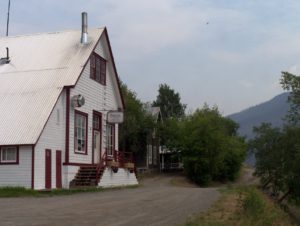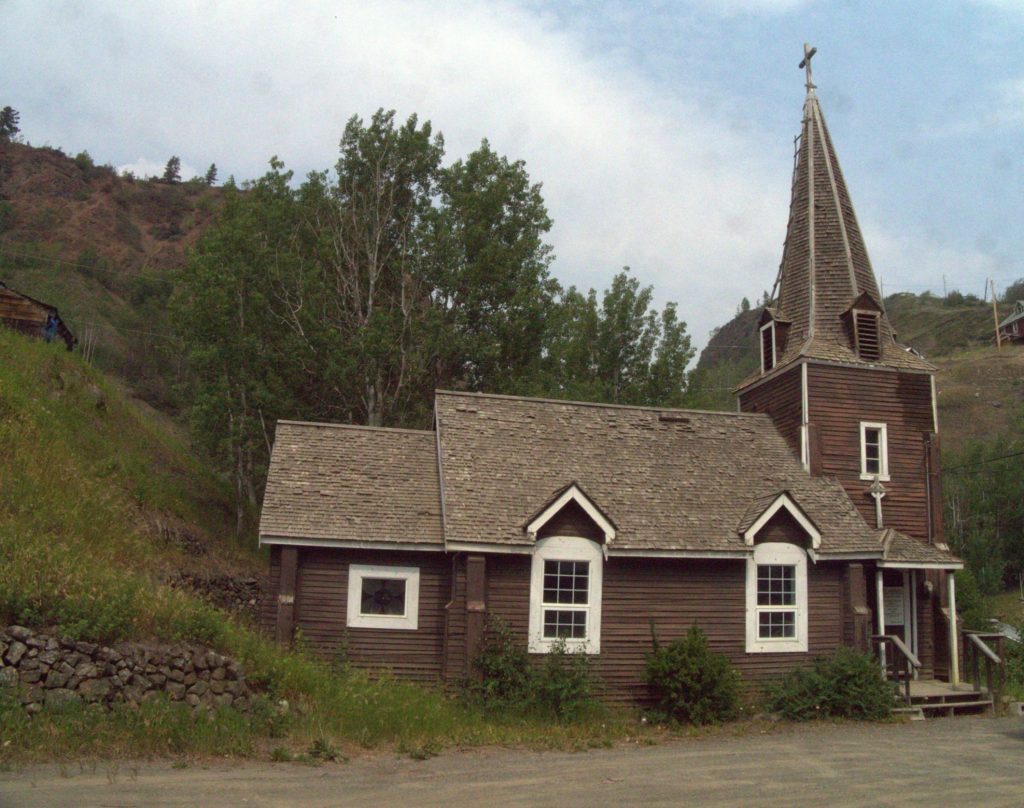Telegraph Creek, BC, the head of navigation on the Stikine River
Telegraph Creek, BC, is a small gold rush era community located at the head of navigation on the Stikine River. The mighty Stikine runs the length of the Stikine Valley, from its wild and remote origins high in the Klappan Plateau to where it finally meets the Pacific Ocean at the port of Wrangell, Alaska.
The town boomed briefly beginning in the 1860s, like so many towns along British Columbia rivers during the gold rush years. But by the 1950s it was really starting to wind down. With the coming of roads connecting to the outside world, the days of the riverboats carrying people and goods for the entire northwest of the province and into the Yukon finally ended.

Today, the old town of Telegraph Creek on the Stikine River is a ghost town. The last full time resident moved out a couple of years ago. But there are still a few people living in the town in the wonderfully warm and bright summer months, with a peak during the salmon season. Additionally, there is the Tahltan First Nations community at the top of the hill, where there is a gas station, general store, RCMP station, and more. It is a small but thriving community, in spite of the devastating forest fire that roared through the village in 2018.
In downtown Telegraph Creek is the Riversong Cafe, which also offers a small number of rooms for travelers. It is the original Hudson’s Bay store, which was moved, along with its warehouses, from the slightly earlier community of Glenora, a few miles down the river. It is claimed that the store and all the other Hudson’s Bay buildings were brought up to Telegraph Creek by barge.
Once Telegraph Creek started demonstrating its place as a permanent community in the Stikine valley, the Hudson’s Bay company and other stores, restaurants, and hospitality establishments all began to move to the new community.

Eventually, the Anglican and Catholic churches came to Telegraph Creek. The original St. Aidan’s Anglican Church chapel was replaced in the late 1800s by the one that is still in use beside the the creek on Stikine Street. The Catholic church about a mile up the river in “Dry Town” burned down in the 20th century, but was finally replaced by a new one in the new village up at the top of the hill, but it, too, was burned down in the fire of 2018 (It is amazing that the old town was not destroyed by that fire!).
Disclaimer: Certain links on this site are affiliate links for which the owner is remunerated for sales and/or leads.
How Telegraph Creek got its name
Just below the community there was a gravel bar that became known as “Buck’s Bar,” after a prospector discovered gold there. It was because of this discovery that the community of Telegraph Creek that quickly sprang up was known as “Buck’s Bar,” after the discovery.
But the gold turned out not to be a huge discovery, and the community may have quickly fizzled out. But in 1866, the construction of the Russian-American Telegraph line passed through Telegraph Creek on its way to the Yukon. Supplies for the construction of that line came up the Skeena River to Hazelton, and up the Stikine River to Telegraph Creek. The famous Telegraph Trail ran along the route of the line from Hazelton to Telegraph Creek, and for more than thirty years, supplies traveled back and forth over the trail by pack-train.
Cataline, the famous mule-train packer whose memorial stands at Old Hazelton, was made famous by his many runs carrying supplies over the Telegraph Trail. On one trip, he even carried a grand piano safely over the trail!
A Ghost Town
Today, downtown Telegraph Creek is considered a ghost town. No one lives in the town year round any more, although

there are a few who spend time there, even in winter. It is fantastic snowmobile country! But many of the old houses left in the town are slowly succumbing to the elements, and many have fallen in.
We have purchased the first house as you enter the old town by road from Telegraph Creek Road (now officially Highway 51). This is the house Kasha (Julia Callbreath), Kathy’s grandmother grew up in. The windows and doors are gone, much of the metal roofing has been removed, and the lumber addition attached to the main log structure long ago caved in. But we are hoping to be able to salvage enough of the log structure to be able to restore it.
There are some logs that are soft in spots that will need to be replaced. But the walls are still straight, and the roof still holds snow in the winter, so we are hopeful. But we also know that wood doesn’t last forever, and if we need to, we will replace it with something that follows the pattern of the original. Time will tell!
If you’re into a spectacular drive, and aren’t afraid of following a very steep, narrow gravel road in from Highway 37 at Dease Lake, you won’t regret driving in to Telegraph Creek. Just be sure to bring extra memory cards for your camera!

